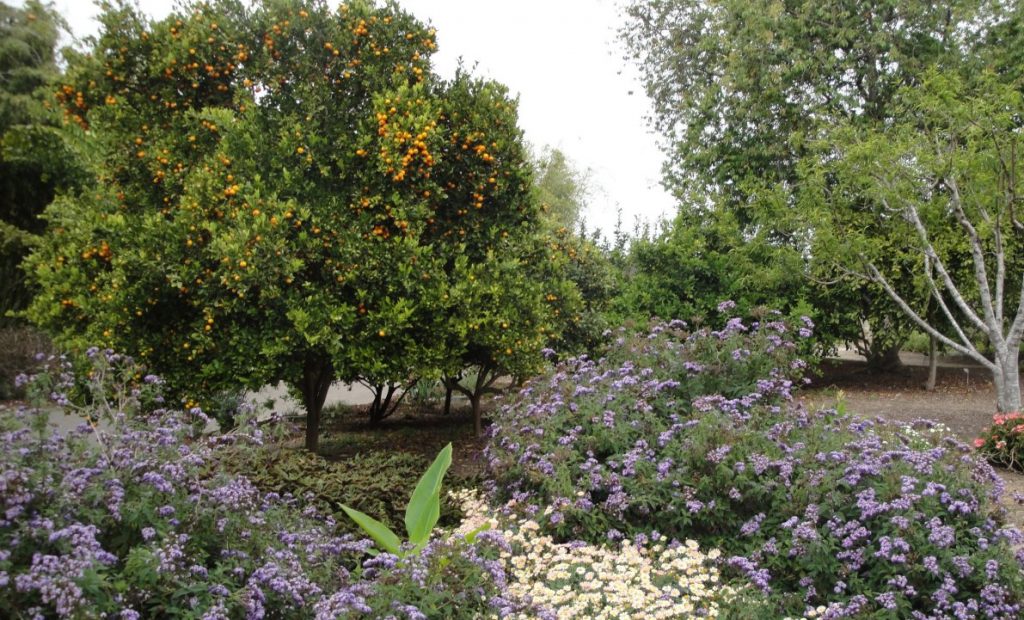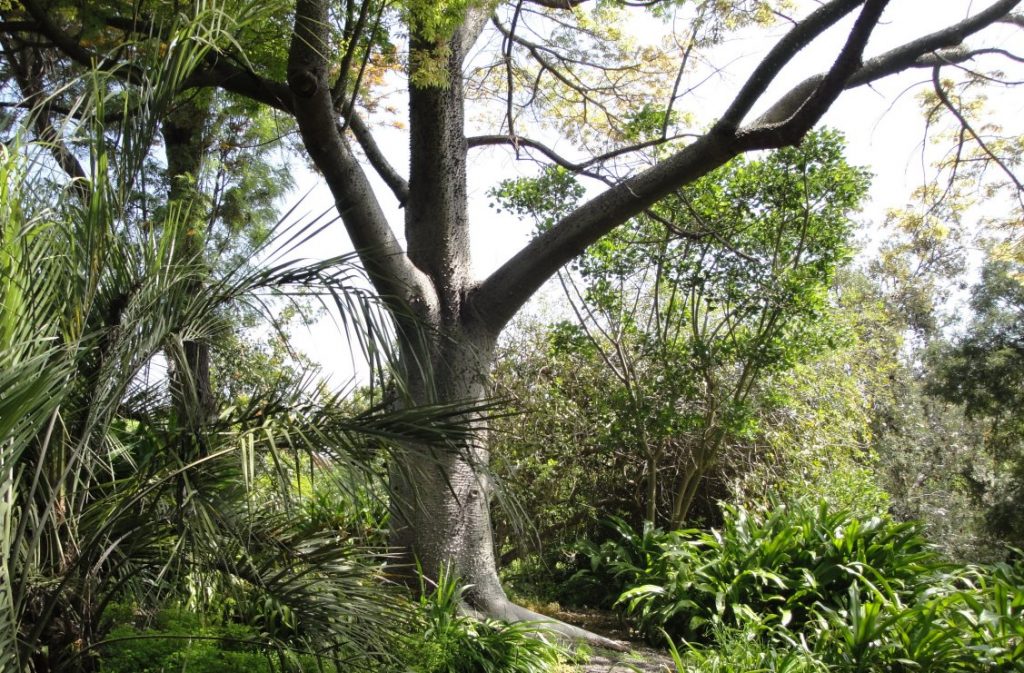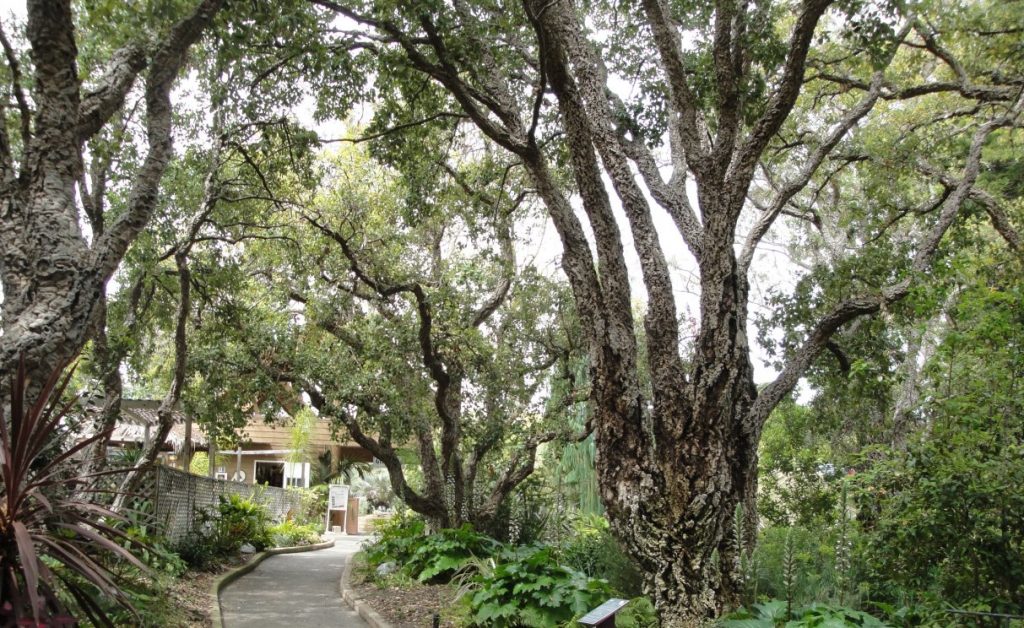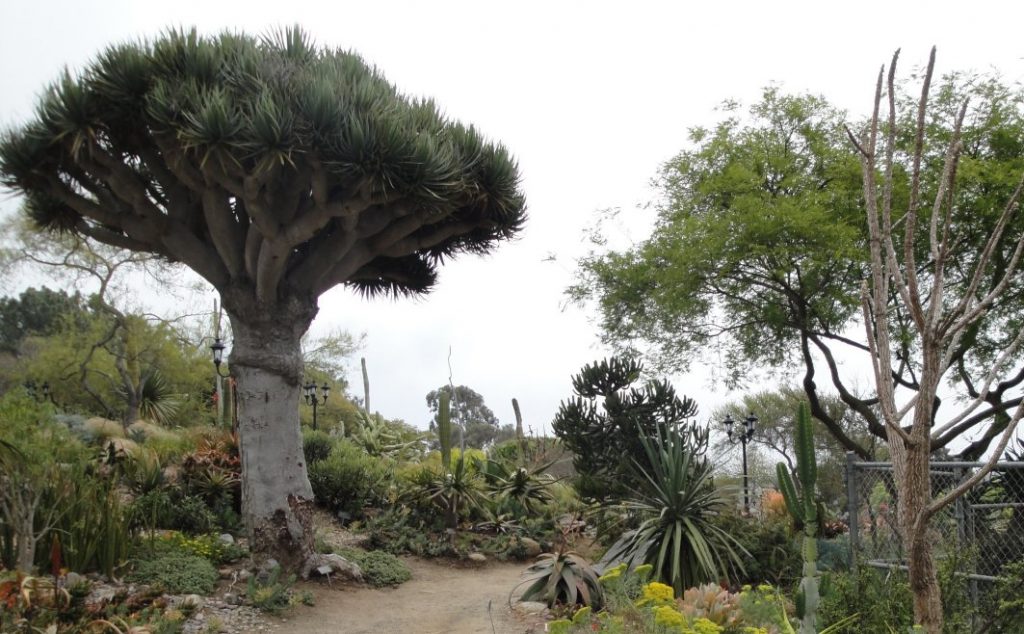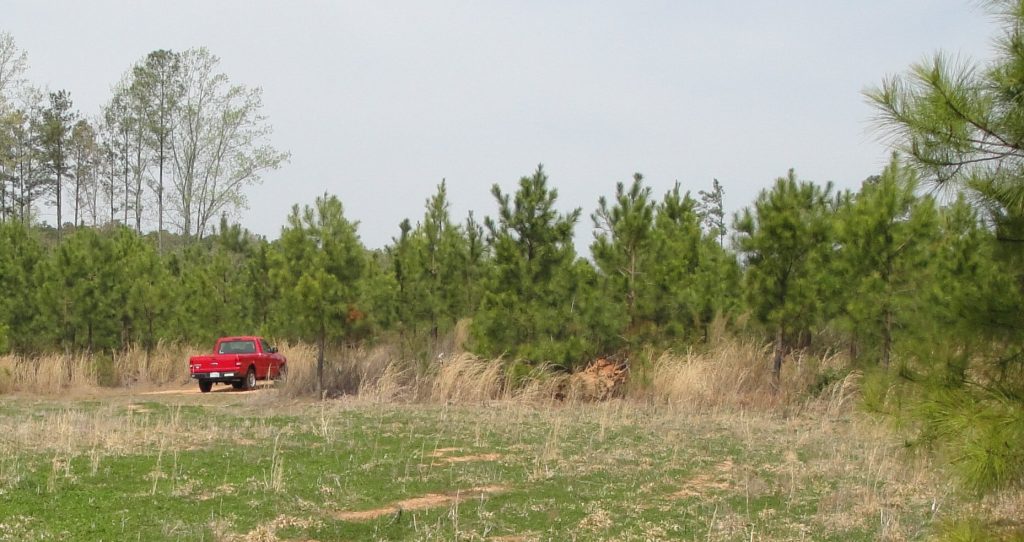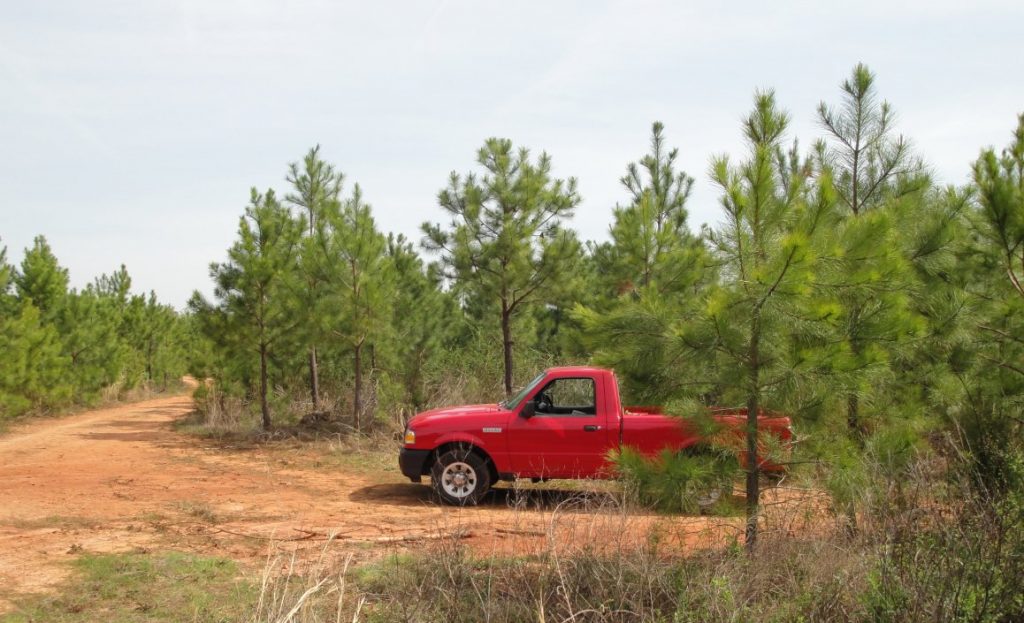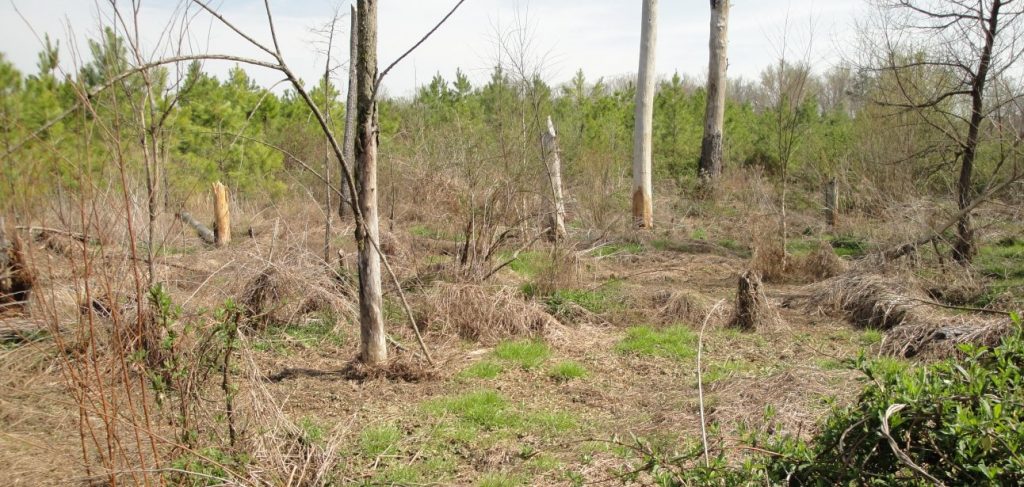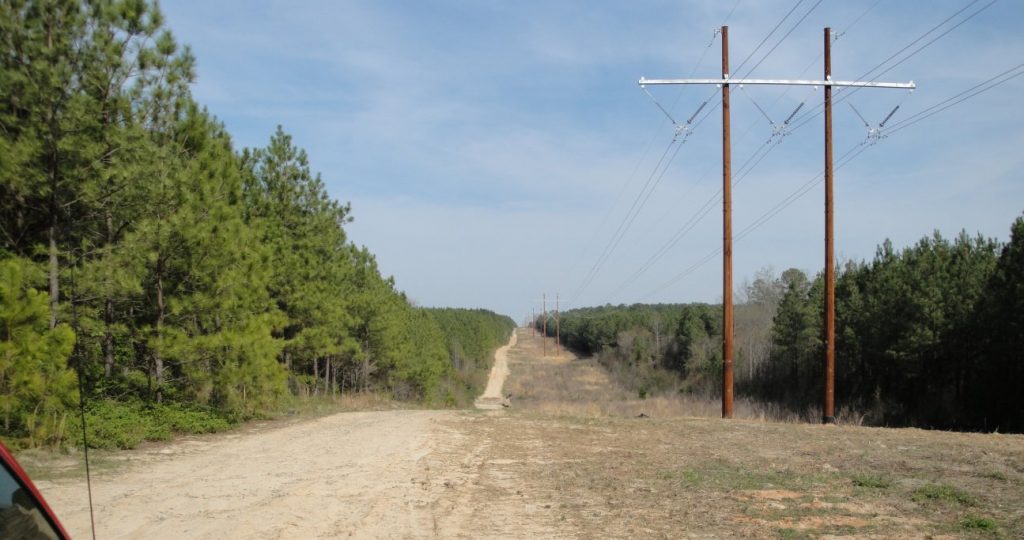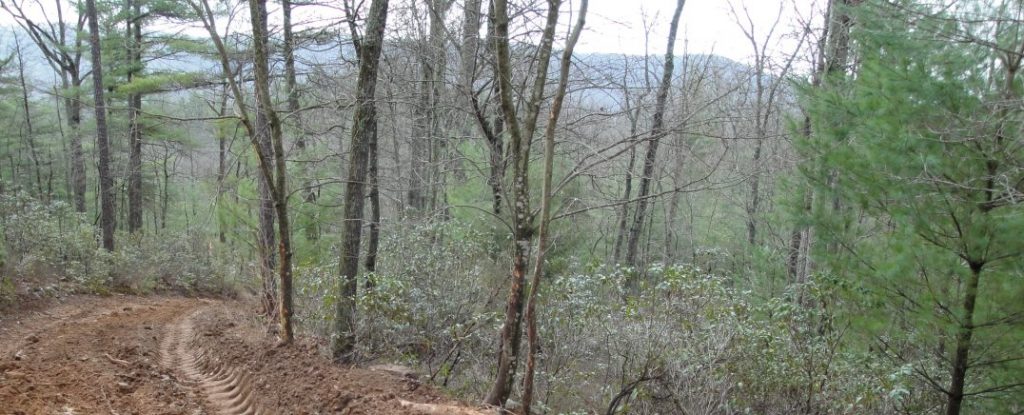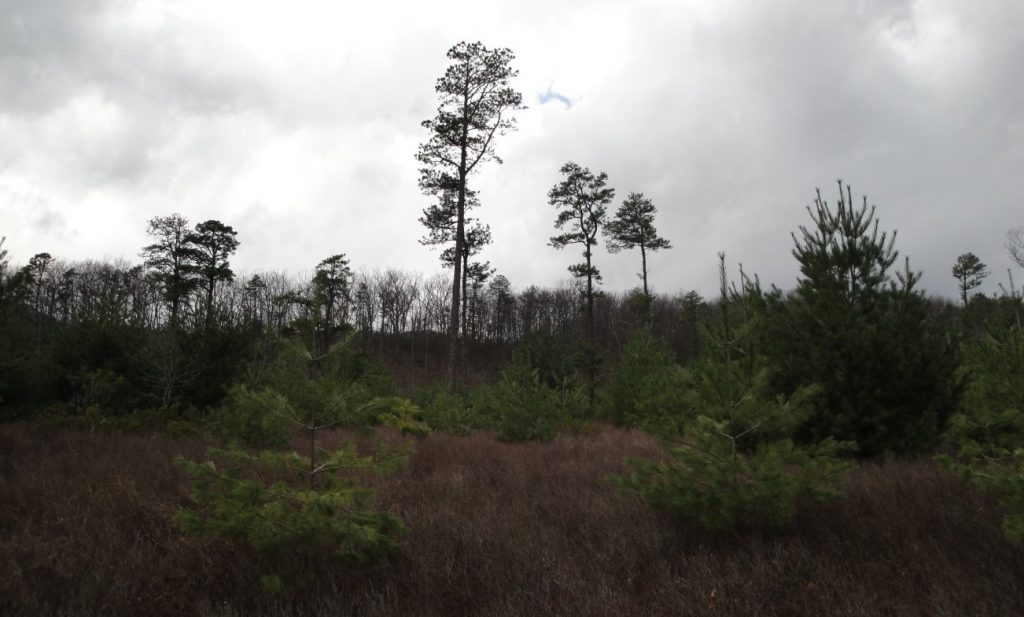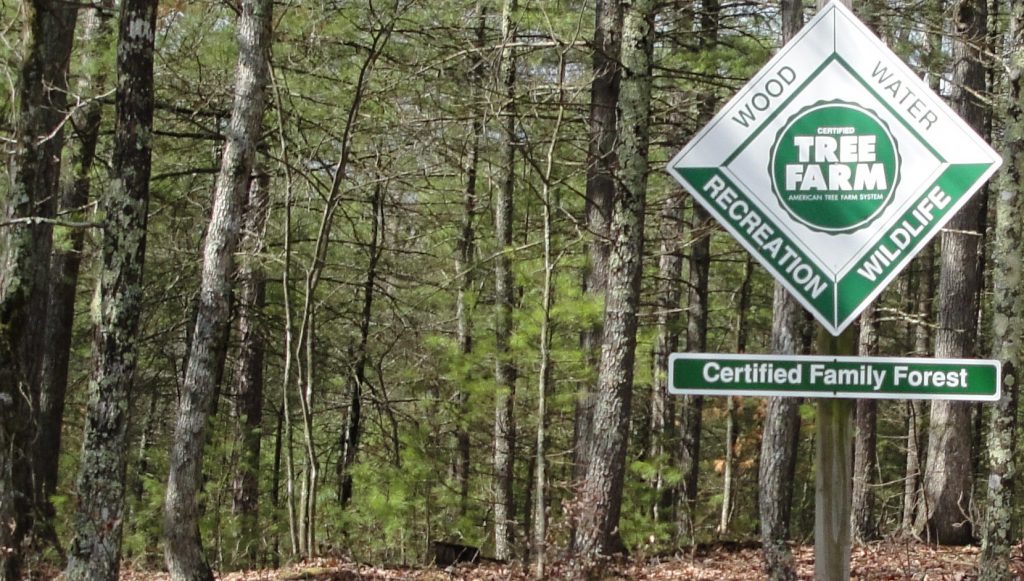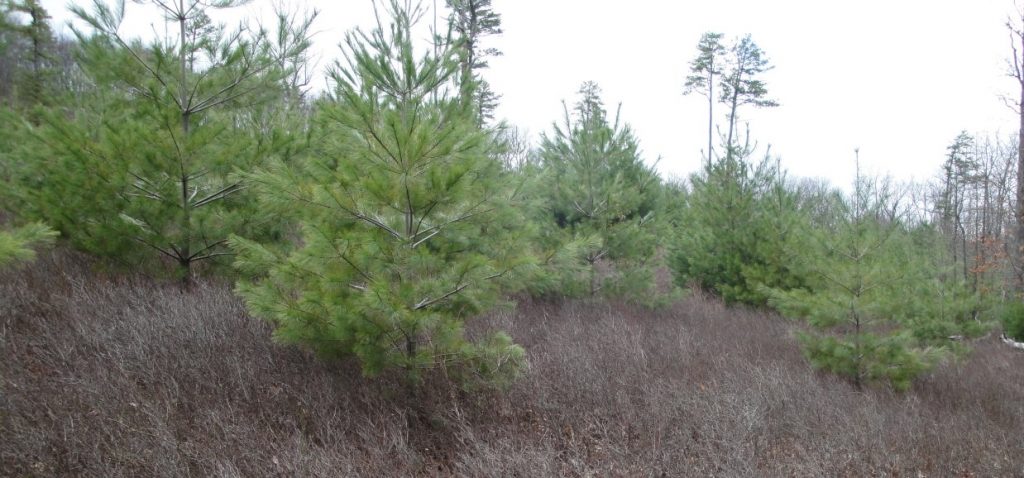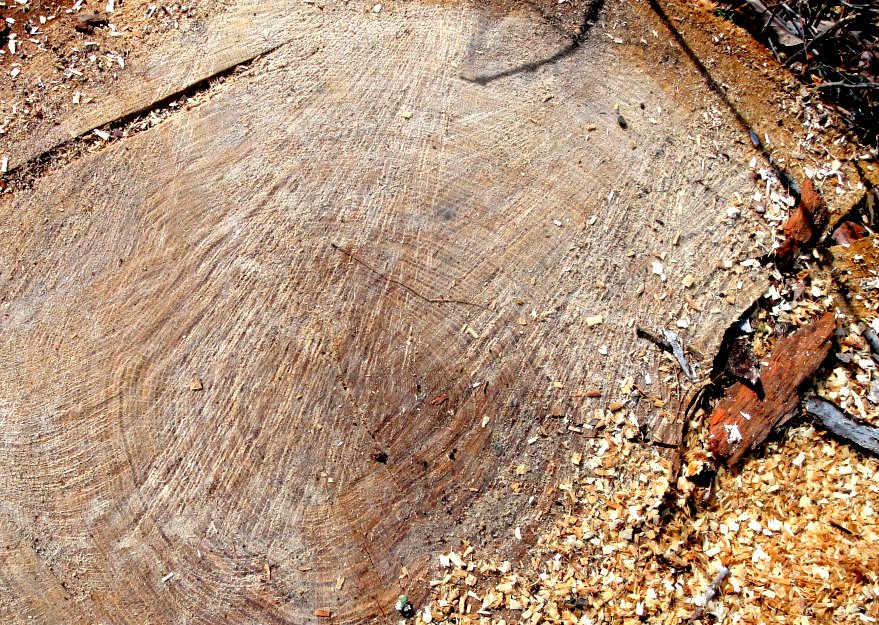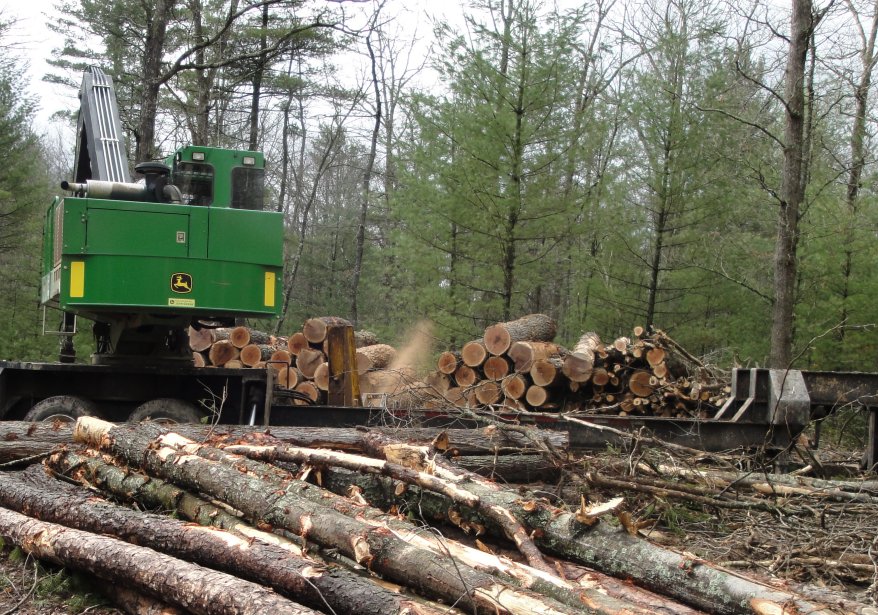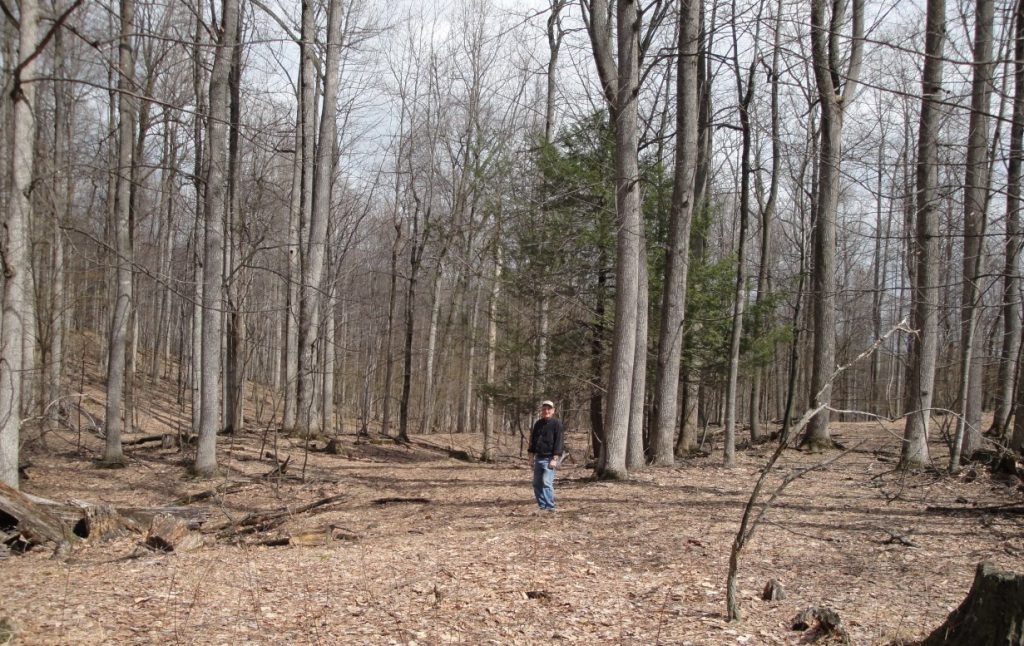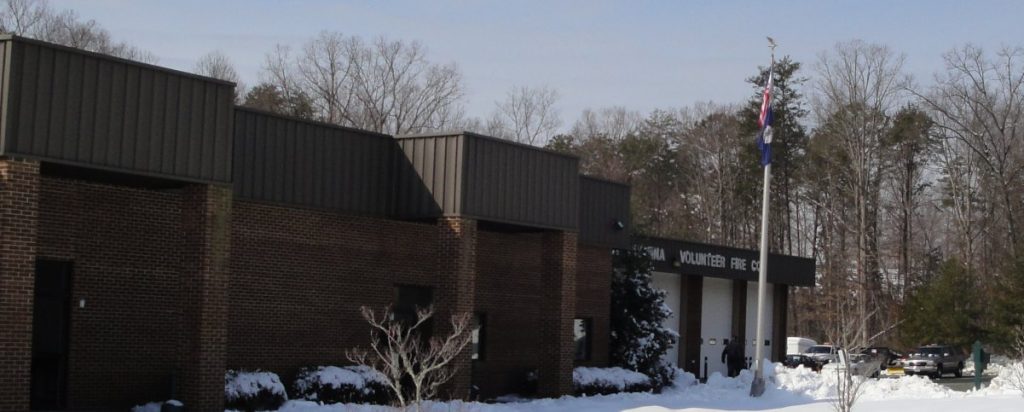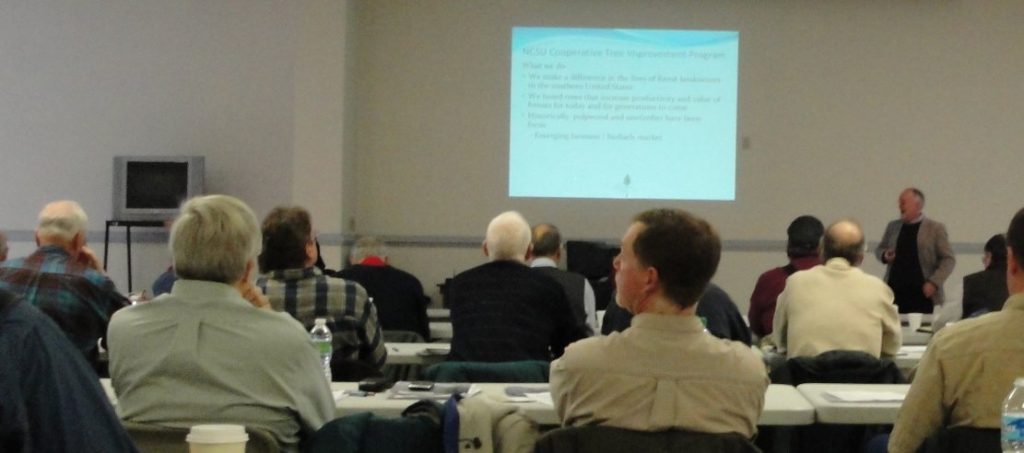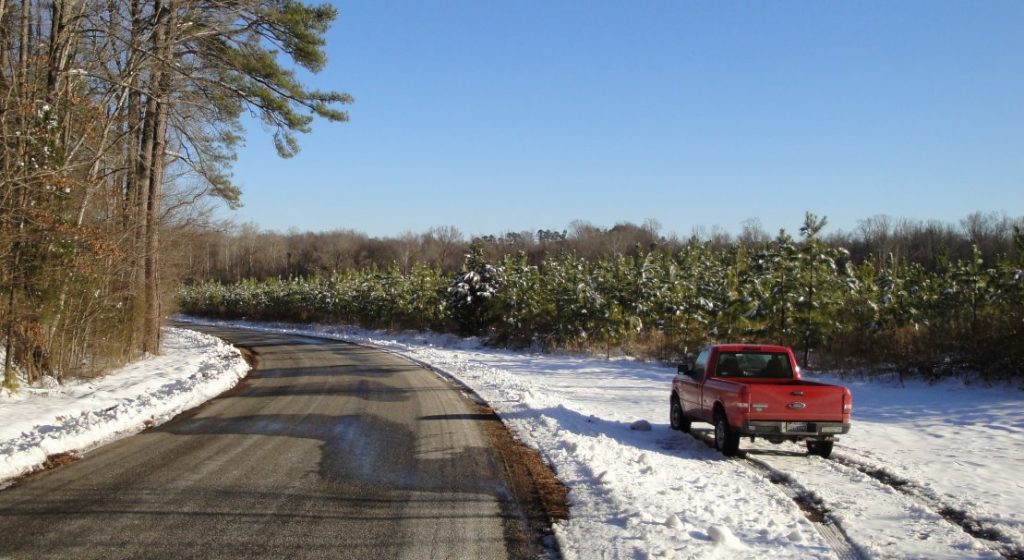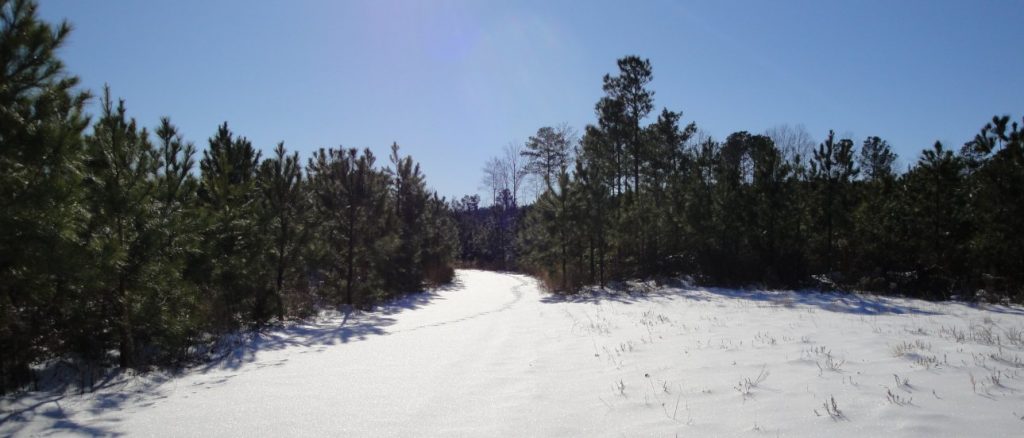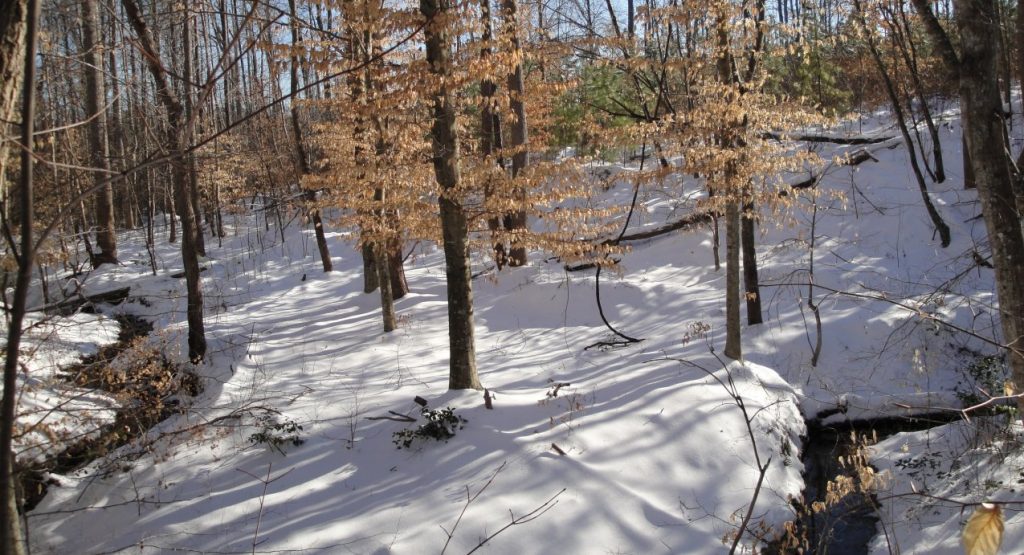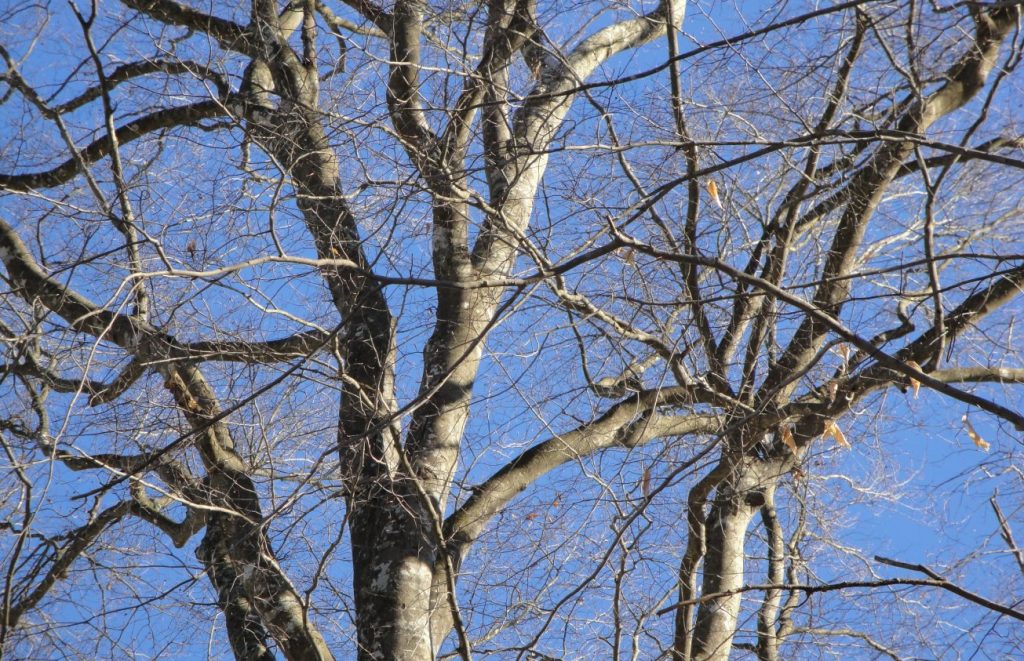Below is my article for the next issue of “Virginia’s Forests”, the publication of the Virginia Forestry Association. It draws on a blog post from a few months ago, so it might be familiar, but there are changes. I am going past the farms on Sunday, so I may have some pictures to add.
Growing the Best Trees
I have been a like a proud parent with my forest land, taking pictures of my growing trees and the changing face of the land I own. One of the tracts was clear-cut in 2003 and the next year replanted with genetically superior loblolly pine, so the trees are now six years old. I know that as a relatively new forest owner, I am just experiencing things that many readers have seen long before, but I still think it interesting to mention.
Differences show up
At first the biggest trees were not those planted ones. The volunteers or the trees that had just been coming up when the stand was cut had a quicker start, and those were the pines I saw and captured in pictures in 2005. But the equation has been changing. The “old” trees are still growing vigorously in many cases, but the “new” trees have now caught up and generally grown taller. There is one particular place where I have been parking my truck and using it for comparison in pictures each year, where I notice this especially. A couple years ago, the old trees looked pretty big, but now the new trees are bigger. The new ones are also shaped better, much less spreading branched and rounded. Beyond all that, the new trees responded much better to my application of biosolids fertilizers. If I can see (and have pictures to prove) this difference in five years, imagine what it will be like in twenty.
Genetic improvements have greatly changed forestry in the last fifty years. This is especially true for loblolly pines, the most commonly planted timber tree in the South, which are unusually adaptable. The “original” loblolly is a fast growing but often crooked and unattractive tree. Some of my volunteer trees show these characteristics. Genetic improvement can be very simple. You just choose the trees with the best characteristics and try to plant more of them. We are now in the third generation of loblolly and the differences are remarkable.
The new trees take thirty years to get as big as the original trees did in eighty. They are also a lot straighter, more resistant to disease and have a better branching structure. You can achieve these goals in different ways. The easiest is the simple one I mentioned above: Just gather the seeds from the best trees, grow them and repeat. The trees pollinate themselves, so there is randomness in this process. Another method is to control pollination in order to ensure that the best fertilize the best. This is more labor intensive, since you have to put little bags on the trees to be sure that only the right pollen gets to the right flowers.
Bring on the clones
The most recent method being deployed is cloning, although it is not really new. Most gardeners have cloned plants. You can clone a willow or a cottonwood just by shoving a stick into wet ground. A grove of cottonwoods along a river may all be the same tree – genetically – as trees sprouted from roots or from sticks that lodged in the mud. I once inadvertently cloned a cottonwood when I used a freshly cut cottonwood branch as a marking stick. A couple days later it sprouted into a little tree. Pines are harder, but they can be cloned too. Among the pines, loblolly is relatively easy because it can re-sprout from a cut when it is young.
I have to say that I am a bit uncomfortable with using clones. It is too much of a monoculture. Without the subtle genetic variations, the whole stand may become easier prey for very adaptive bugs or disease, as has happened with some apple varieties. On my land, I would prefer to go with a little more genetic variety, even if that means lower yields, but that is a judgment each tree farmer must make for him/herself.
Good genetics can move the whole curve higher, but variation remains and good genetics are most profitably deployed as other conditions improve. As I mention above, the superior trees responded significantly better to my biosolid application. Many of the costs associated with establishing and managing a stand of trees remain the same no matter what you plant. If you are planning to expend a lot of energy and time on management, [“planning” is repeated in sentence] you are well advised to spend a little more for genetically superior trees. All trees will do better with better management, but the better trees will do better than the others.
Improving conditions improve the better trees even more
In other words, the more you improve conditions and remove obstacles, the more results are determined by genetics and the greater the gap between the superior and the inferior trees. It makes sense when you think in terms of potential. It doesn’t make much difference if one tree has the genetic potential to grow 80 feet tall in twenty years while another can only grow 40, if limiting conditions prevent any of them from growing more than 30 feet tall.
So what are some of the limiting factors? The most obvious are climate, rainfall, soil and elevation. These make a difference when choosing a site, but after that they are beyond our control. We can control, spacing among the trees, thinning schedules, rotation timing, competition control and fertilization.
So I guess the trees you plan to plant or allow to grow on your land should depend on how much you are going to put into it. If you plan to do not much of anything except cut them sometime in the future, it probably doesn’t pay to invest in superior trees. If no attention is paid to spacing, thinning, fertilization, etc., they won’t grow to their potential anyway and almost any old tree will do. But the more you plan to do, the more you need to do it right.
I am just enjoying my land and trying to learn as much about forestry as I can, with a little help from my friends and fellow tree farmers. And when I learn something, I try to pass it on too. That is what it means to be a tree farmer with your land in the American Tree Farm System.


